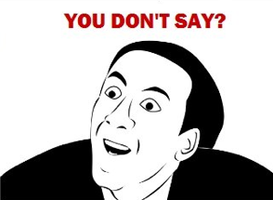 |
| I can hear your blatant sarcasm, you know. |
 |
| I let a hipster and a New Age woman battle for the honor of being my feng shui picture. She choked the hipster to death with a string of beads. |
Because of my love of books I like to learn lots of little things about them. I know why there are those little backwards-counting numbers on the copyright page (it has to do with the edition number, in case you're too lazy to look it up and want a quick, glossed over answer), and how there is a difference in the binding of hardbacks.
I learned only recently about something called the deckle edge.
It started with looking at different formats for Andrea Cremer's Nightshade I noticed the hardback edition specified deckle edge. Curious, I looked it up. Here's an image as well as some text stolen from Wikipedia, because I'm not in school anymore and can be as lazy as I want with my sources.
.JPG/779px-Deckle_edge_book_(Chaucer).JPG) |
| I will, however, provide a link for the lazy-but-curious reader. |
In manual papermaking, a deckle is a removable wooden frame or "fence" placed into a mould to keep the paper slurry within bounds and to control the size of the sheet produced. After the mold is dipped into a vat of paper slurry, excess water is drained off and the deckle is removed and the mold shaken or "couched" to set the fibers of the paper. Some of the paper slurry passes under the deckle and forms an irregular, thin edge.
The Wiki continues saying that, as technology progressed, the cutting of paper became much easier and cost-effective. However, suddenly deckle edges became "fancy", making people think it was made with a higher-quality paper or was more "Artisan" in its craft. These days machines are built specifically to reproduce the old-timey deckle edge in books, though uninformed people believe deckle edges on their books means the book was made cheaply, or the printing process was defective. For a long time I thought some of my deckle edge books were defective, until I started seeing a lot more of them, then I started to think publishers were getting cheaper with their printing process, resulting in crappily-cut paper. But it's worse...much worse.
They're hipster books.
 |
| The hipster recovered, because dying is too mainstream. |
Knowing what I do now, I'm still not a fan of deckle edge, and have actually waited for certain books to come out in paperback in order to avoid the deckle edge hardbacks. I just feel like, with their rough edges, they'd be more prone to tearing. Still, it's good to know there's a reason.
No comments:
Post a Comment